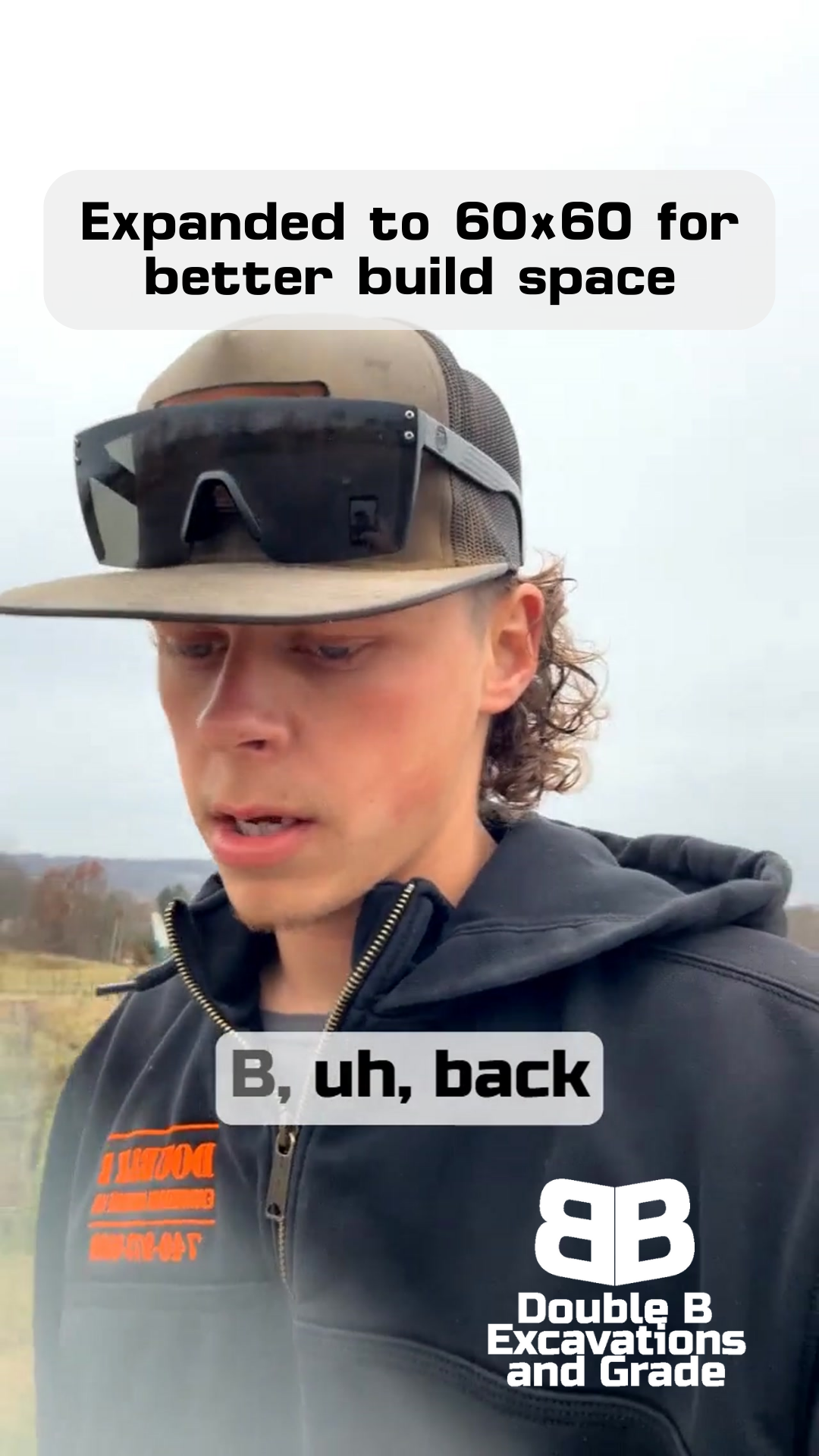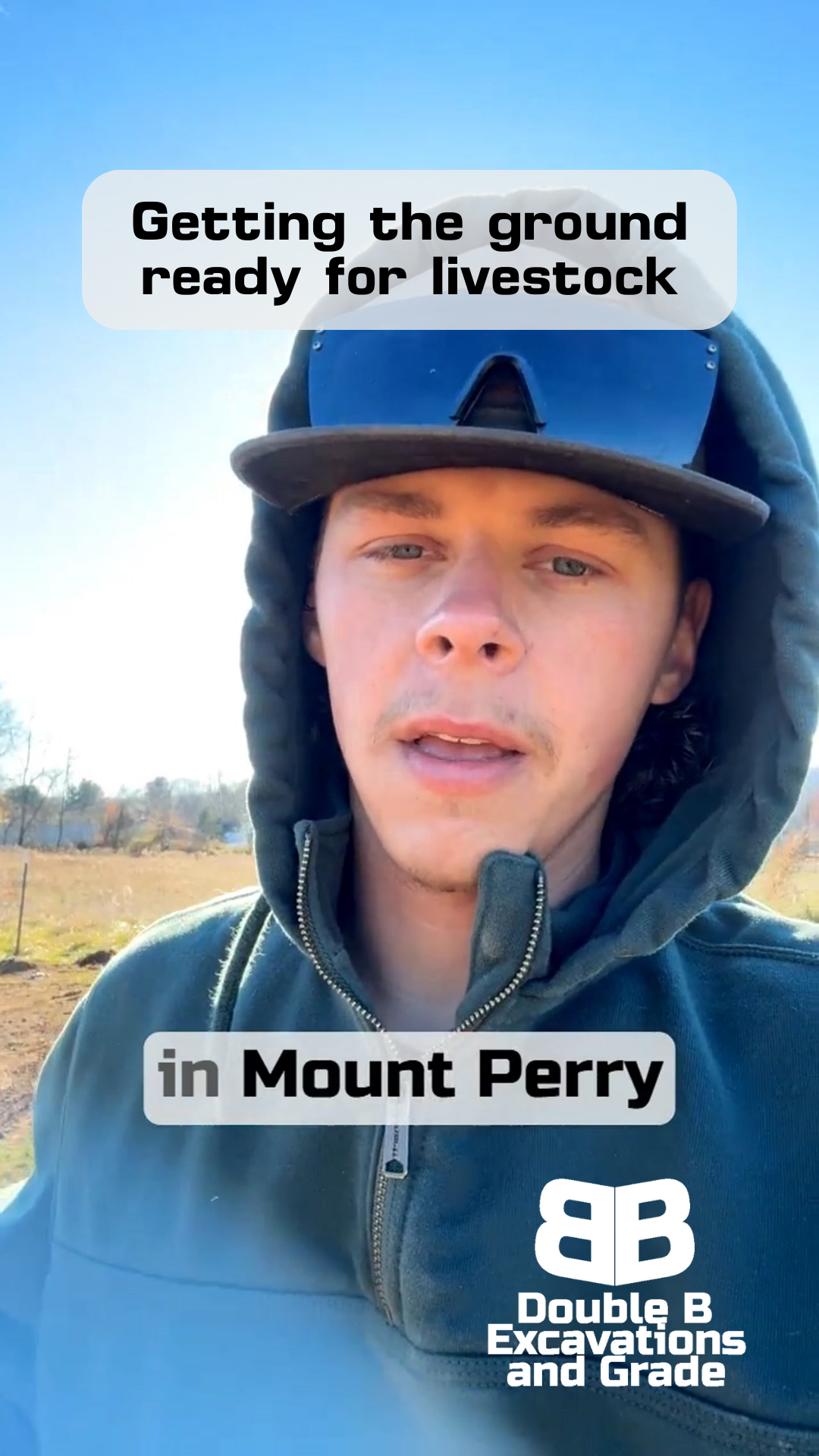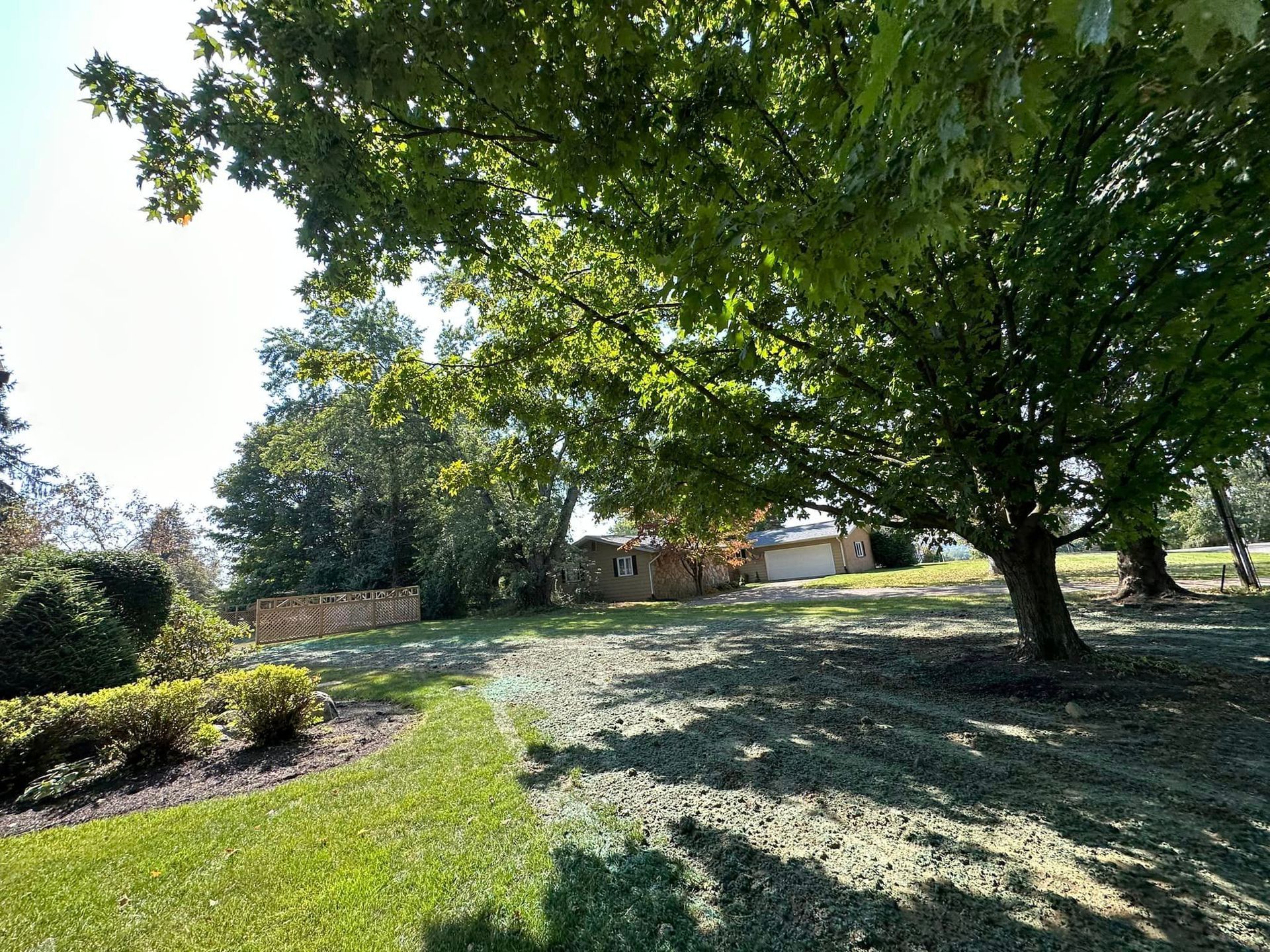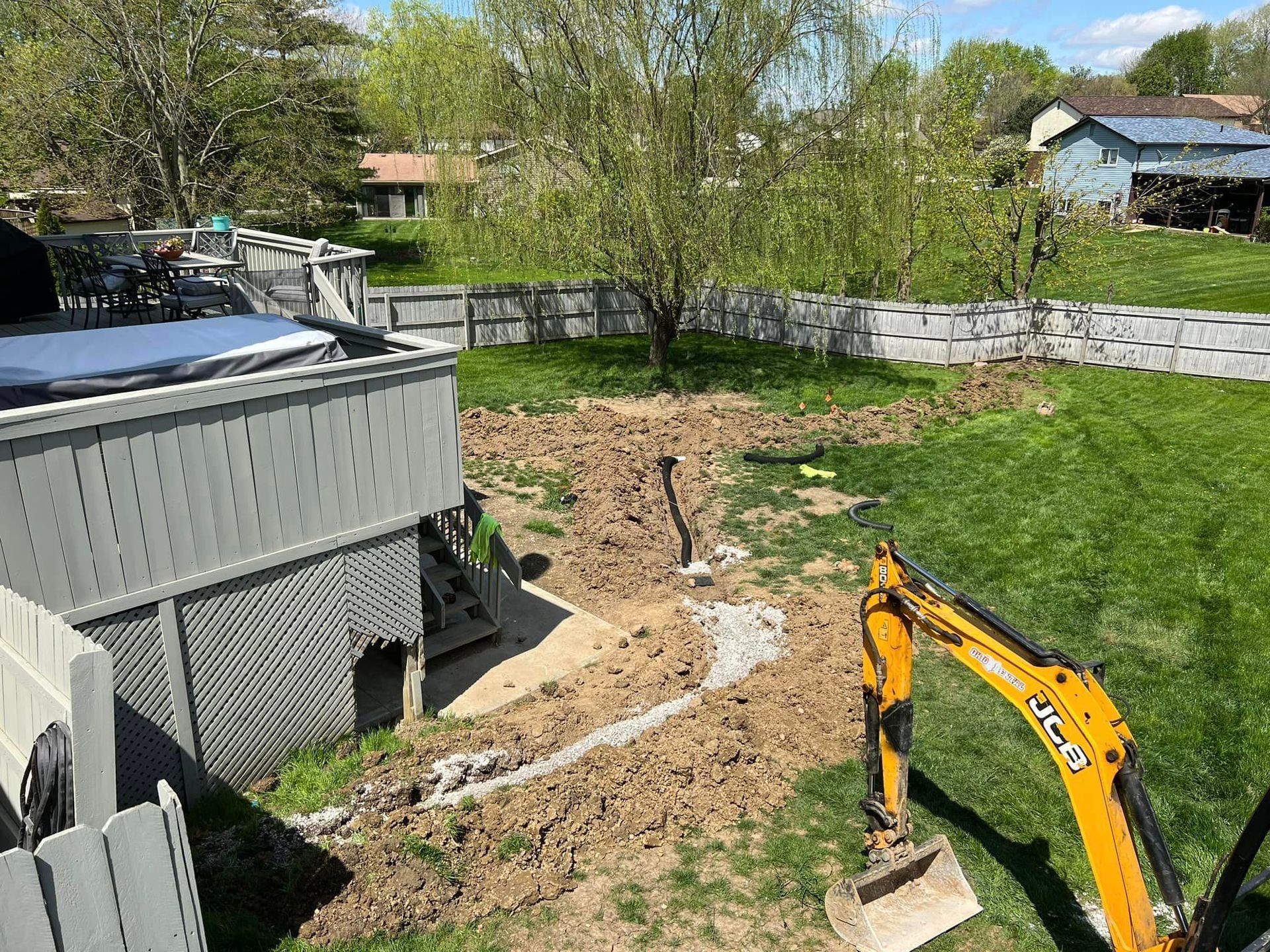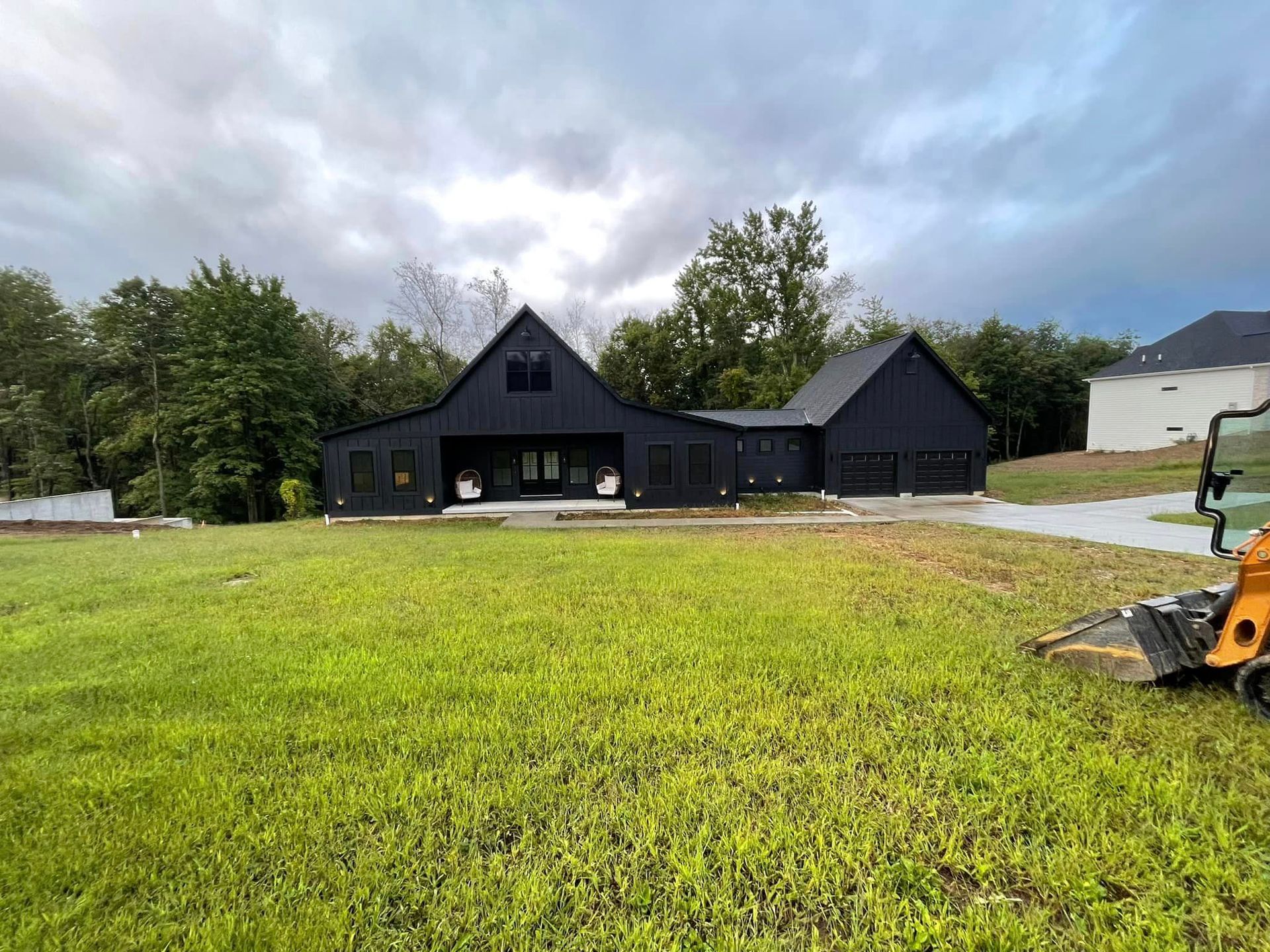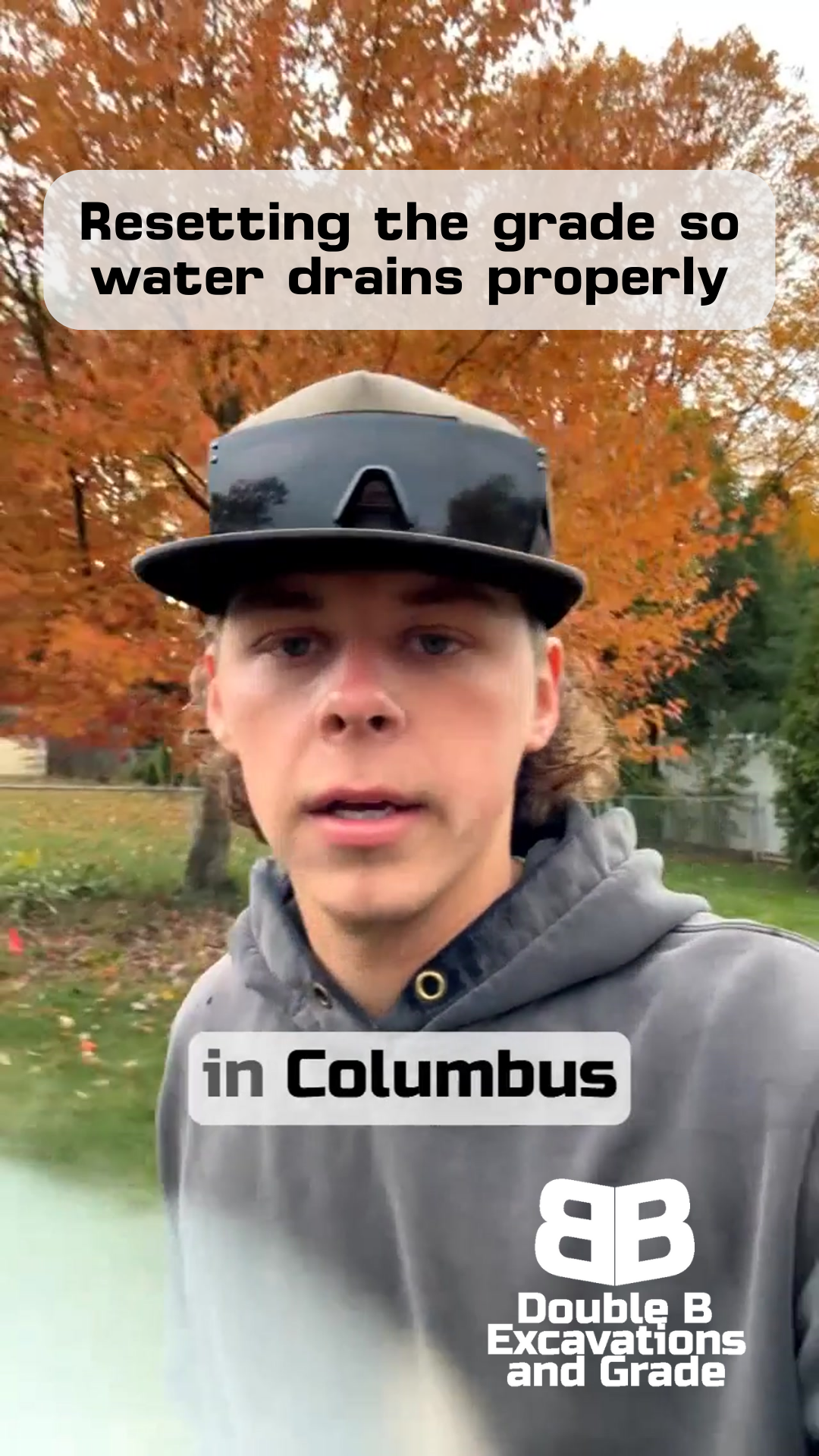Why We Switch from Machine to Shovel: Safe Excavation Around Utility Lines
Double B Excavations & Grade LLC
When Experience Says "Slow Down"
WHY THE BIGGEST MACHINE ISN'T ALWAYS THE RIGHT TOOL
There's a moment every excavator knows well - you're digging a sewer line, making good progress, when you spot those familiar utility markings.
That's exactly where we found ourselves this morning.
The soil was back-falling, pushing us to dig wider than planned, and there it was: a gas line marking right in our path.
This is when experience kicks in and tells you it's time to switch from machine to shovel.
Some might see this as losing time, but those of us who've been in the business long enough know better.
When you're working around utilities, especially gas lines, taking an extra hour now can save days of headaches - or worse - later.
It's not just about following regulations; it's about protecting our community's essential services and keeping everyone safe.
Welcome to Double B!
Understanding Utility Locates
Every project starts with an 811 call. Those colored markings on the ground aren't just suggestions - they're your map to what's buried below. When we see those marks, we know exactly what we're dealing with: gas lines, water mains, power cables, and more. Each one requires specific handling and respect.
Here's something a lot of people don't realize: once 811 does their job marking those utilities, the responsibility shifts to us. If we hit something, even with those marks in place, that's on us. This isn't just about avoiding fines or repair costs - it's about maintaining services that hundreds of families depend on. One wrong move with an excavator could cut off gas to an entire neighborhood or create a dangerous situation that puts everyone at risk.
The Transition Process
When we spot those utility markings getting close to our dig area, everything changes. First thing we do is stop the machine - no questions asked. You might have the steadiest hand on an excavator in Ohio, but when you're working near gas lines, mechanical precision isn't enough.
Here's exactly how we handle it: First, we dig slowly with the machine until we're about three feet from where we think the utility line should be. Then comes the switch to hand digging. We take careful scoops with the shovel, checking the soil as we go. Once we find the line with our shovels, we can better understand its exact location and depth. Only then do we know if and how we can safely work around it.
Tools and Techniques
People often ask why we can't just "dig carefully" with the machine. Truth is, even the smallest bucket on our excavator can still do major damage to a utility line. That's why we keep it simple - a good sharp shovel and some elbow grease is often your best tool near utilities.
Here's our method: We dig by hand until we expose the utility line. Then we use what we call the "scoop and verify" approach. Take a small scoop with the shovel, check what you've exposed, then take another small scoop. Yes, it's slower than machine work, but it gives us complete control. We can feel if we're getting close to something before we see it, and that extra sensitivity has saved us from plenty of close calls over the years.
Think about it this way - would you rather spend an extra hour hand digging, or spend days dealing with a ruptured gas line? Not to mention the safety risks and the impact on the community. When you look at it that way, the choice to slow down and do it right becomes pretty clear.
Real-World Impact
Let me be straight with you about what's at stake here. A hit utility line isn't just an inconvenience - it can shut down entire neighborhoods. We've seen situations where one rushed decision led to hundreds of homes losing gas service in the middle of winter. That's not something any responsible contractor wants on their conscience.
The costs add up fast too. Emergency utility repairs, project delays, potential fines - but the biggest cost isn't measured in dollars. It's measured in trust. When we work carefully around utilities, we're protecting more than just pipes and wires. We're protecting our reputation and our commitment to doing things right.
Professional Tips
After years of working around utilities, here are some key lessons we've learned:
- Never assume the depth of a utility line
- Those 811 markings might not be perfect, but they're your best starting point
- If something doesn't look right, stop and call for a re-locate
- Keep your property owner informed about what you're doing and why
- Document everything - photos before, during, and after can save you headaches later
Closing
Working around utilities isn't the fastest part of any excavation job, but it's one of the most important. When we switch from machine to shovel, we're not just being cautious - we're being professional. It's about understanding that every utility line connects to real homes and real families in our community.
Looking Forward
Need help with an excavation project that involves working around utilities?
We're always happy to take a look and provide our professional assessment.
Because at Double B, we believe doing it right is more important than doing it fast.
